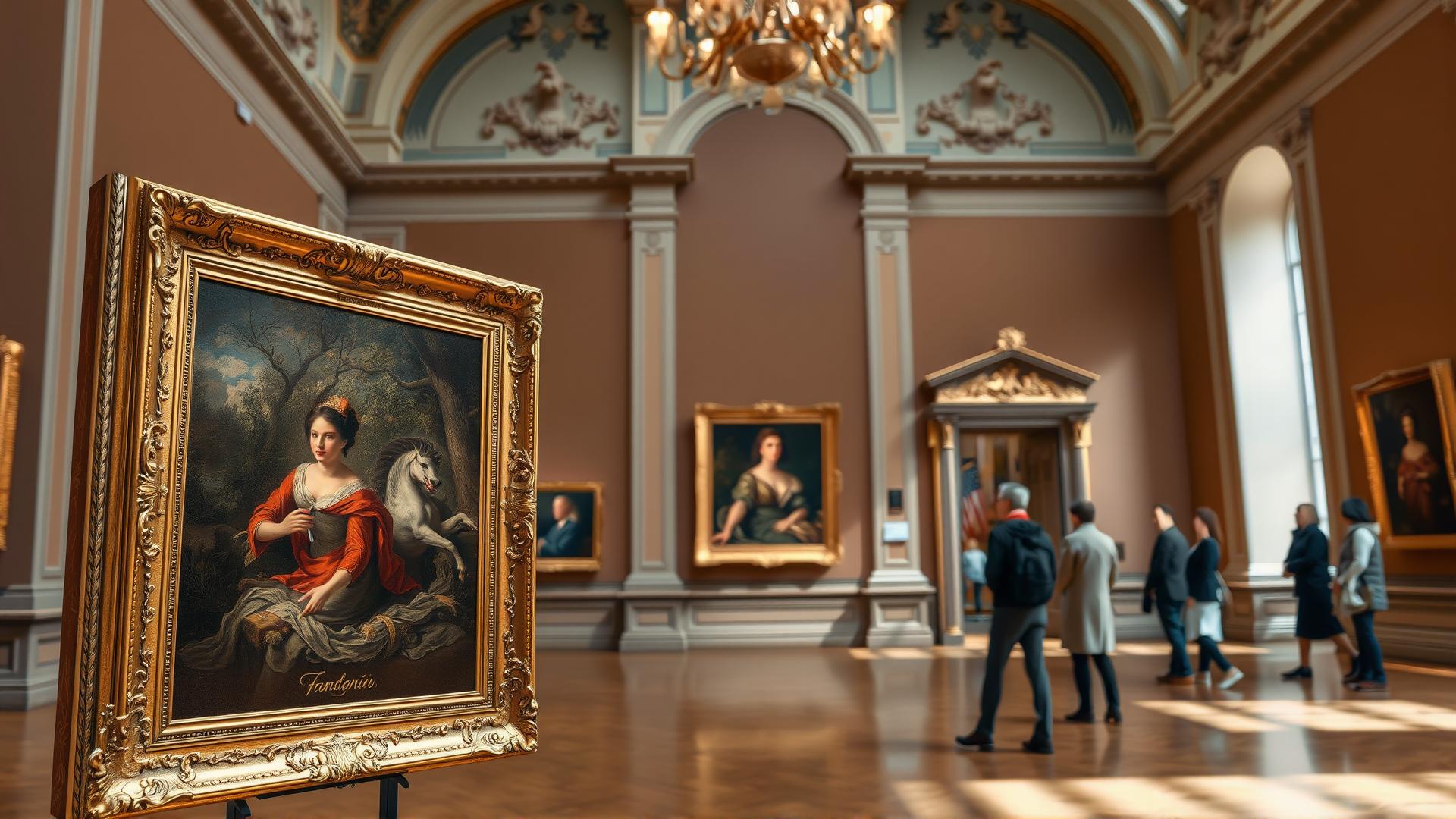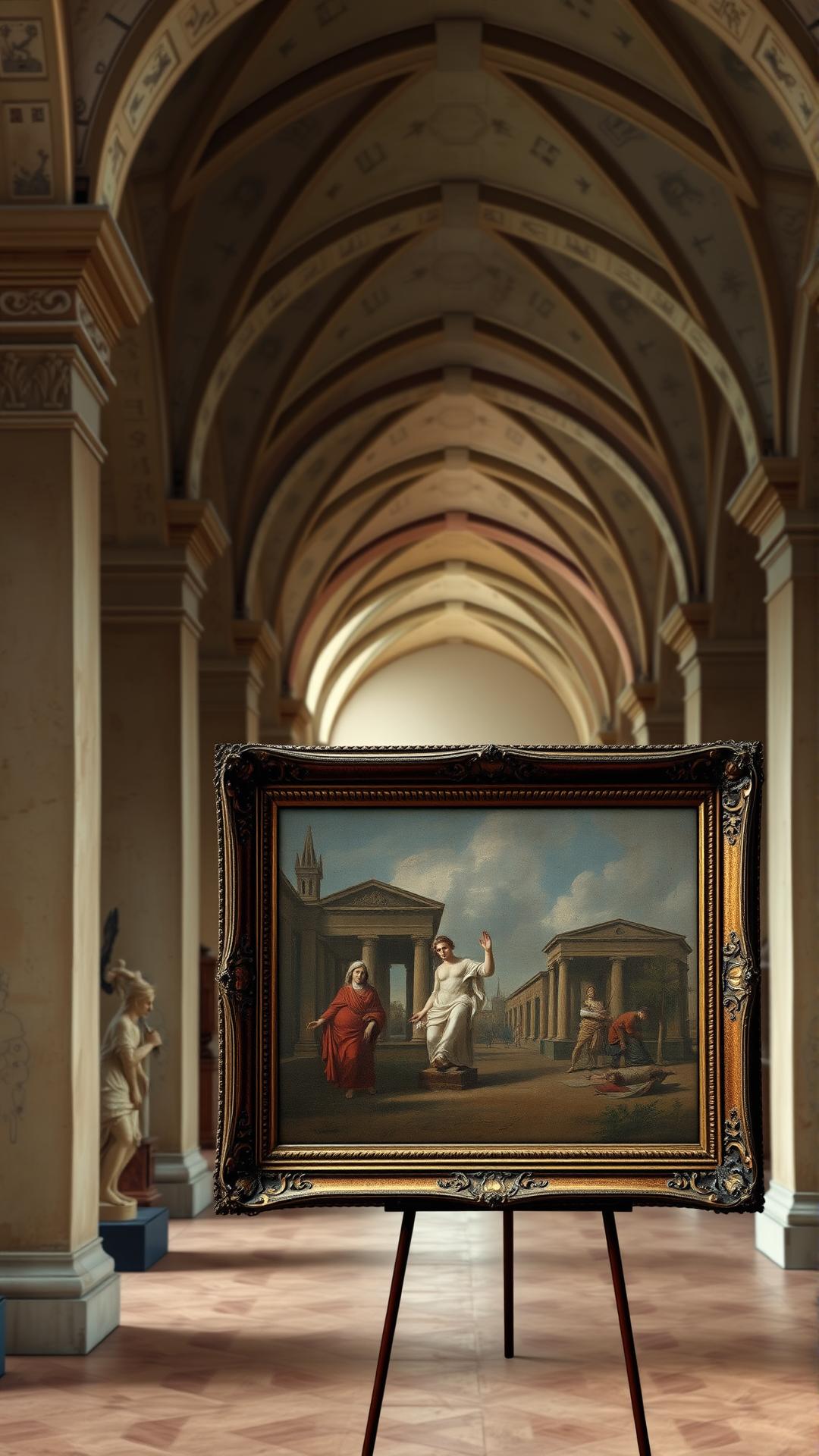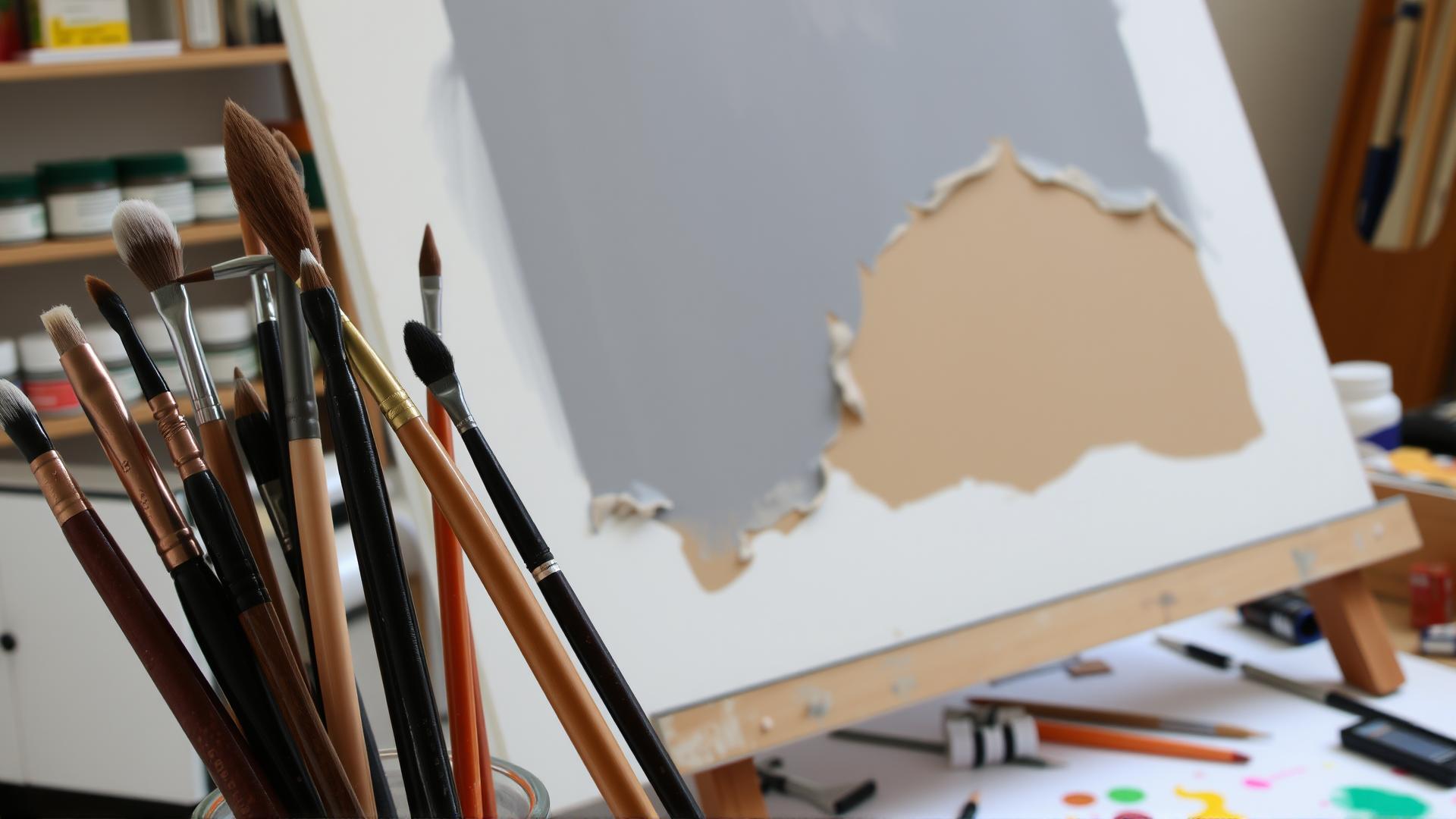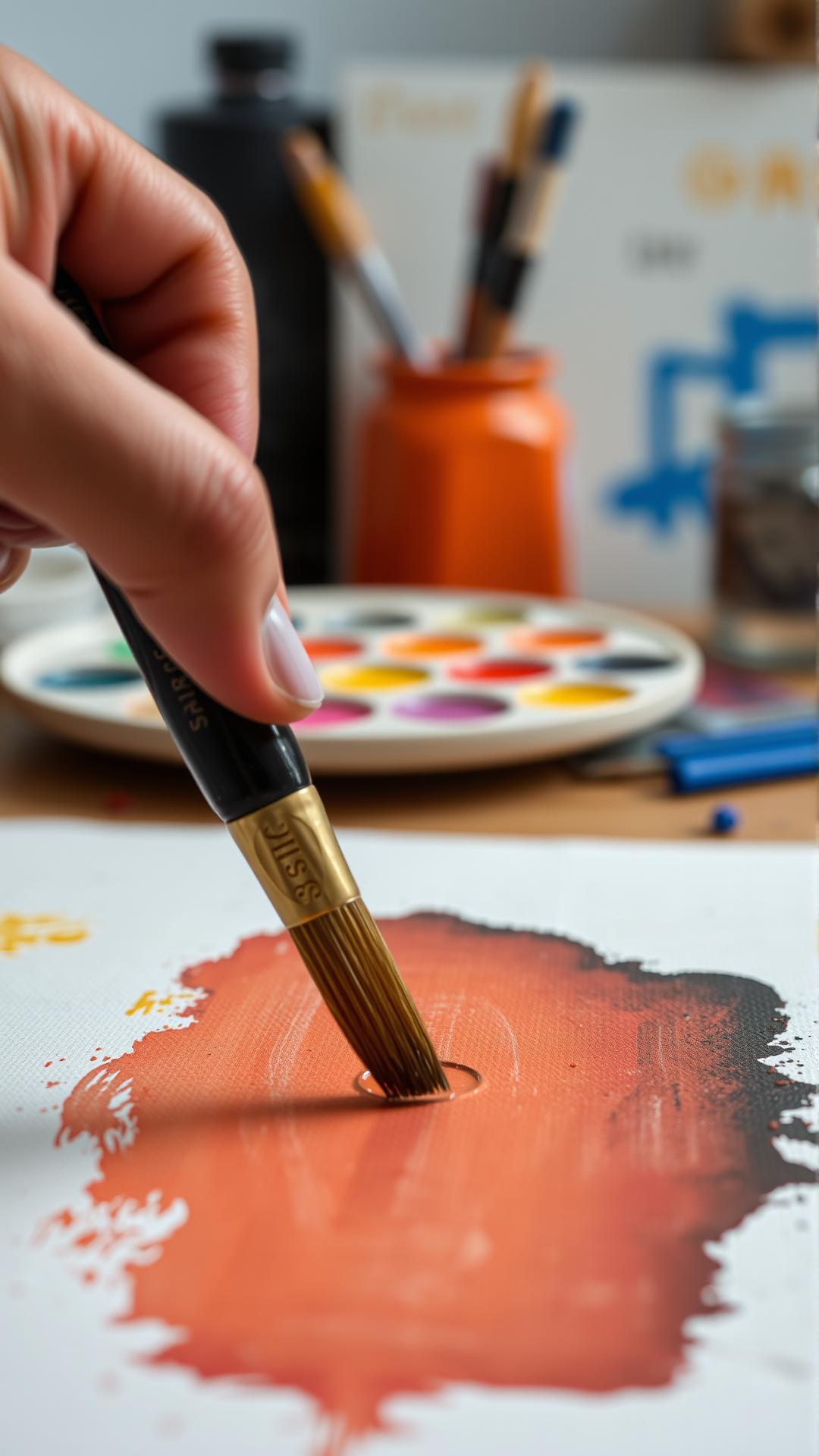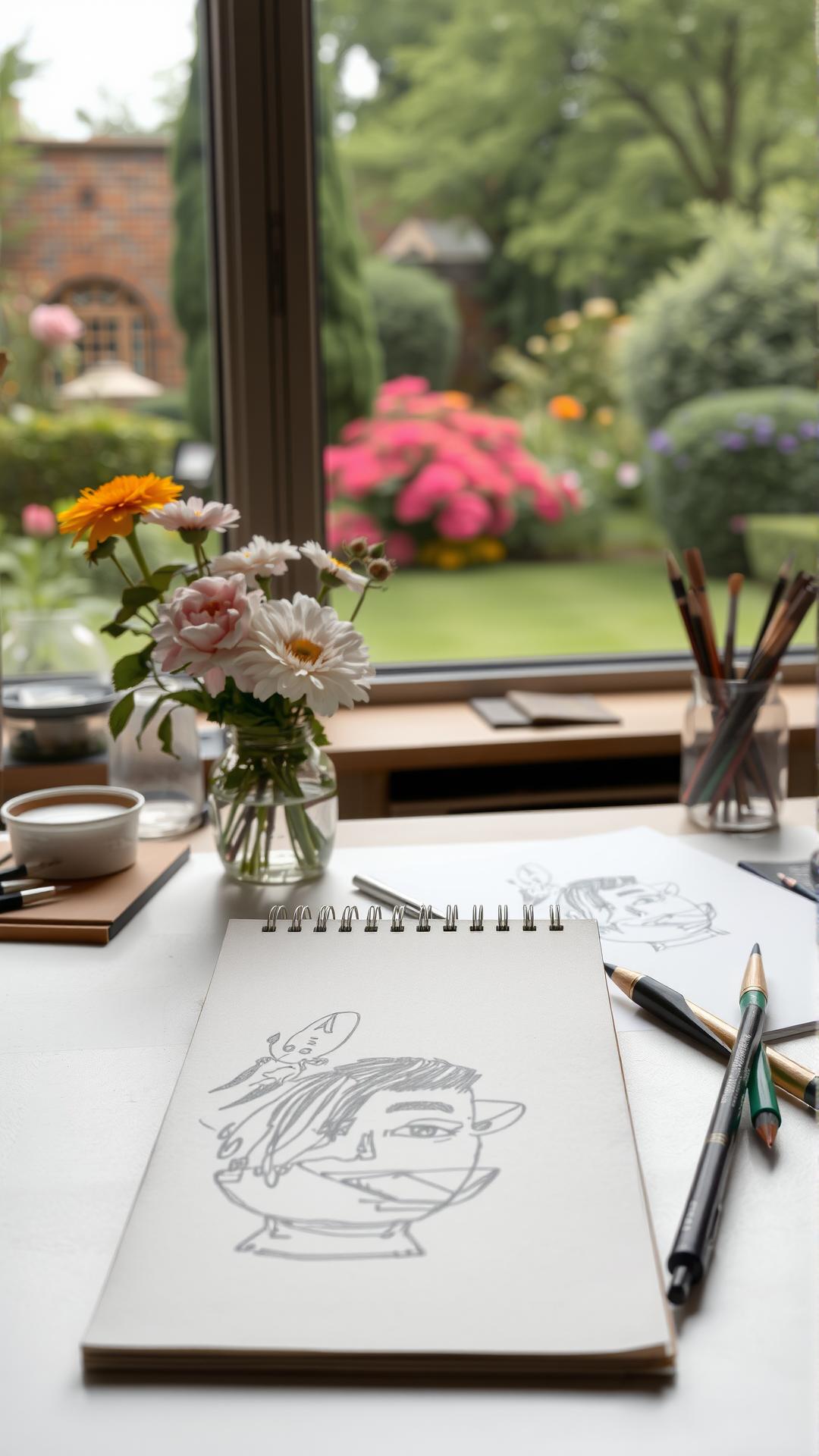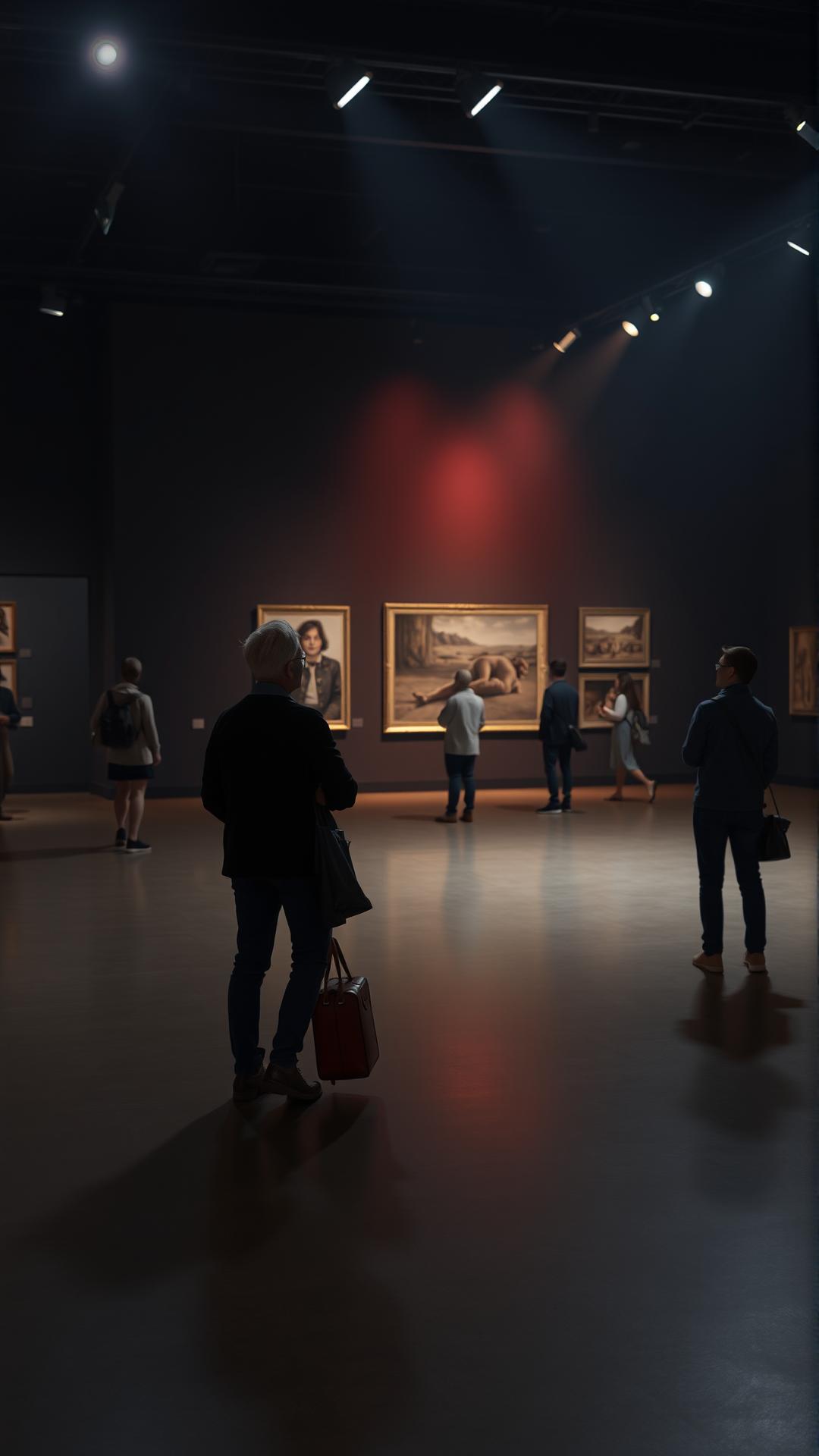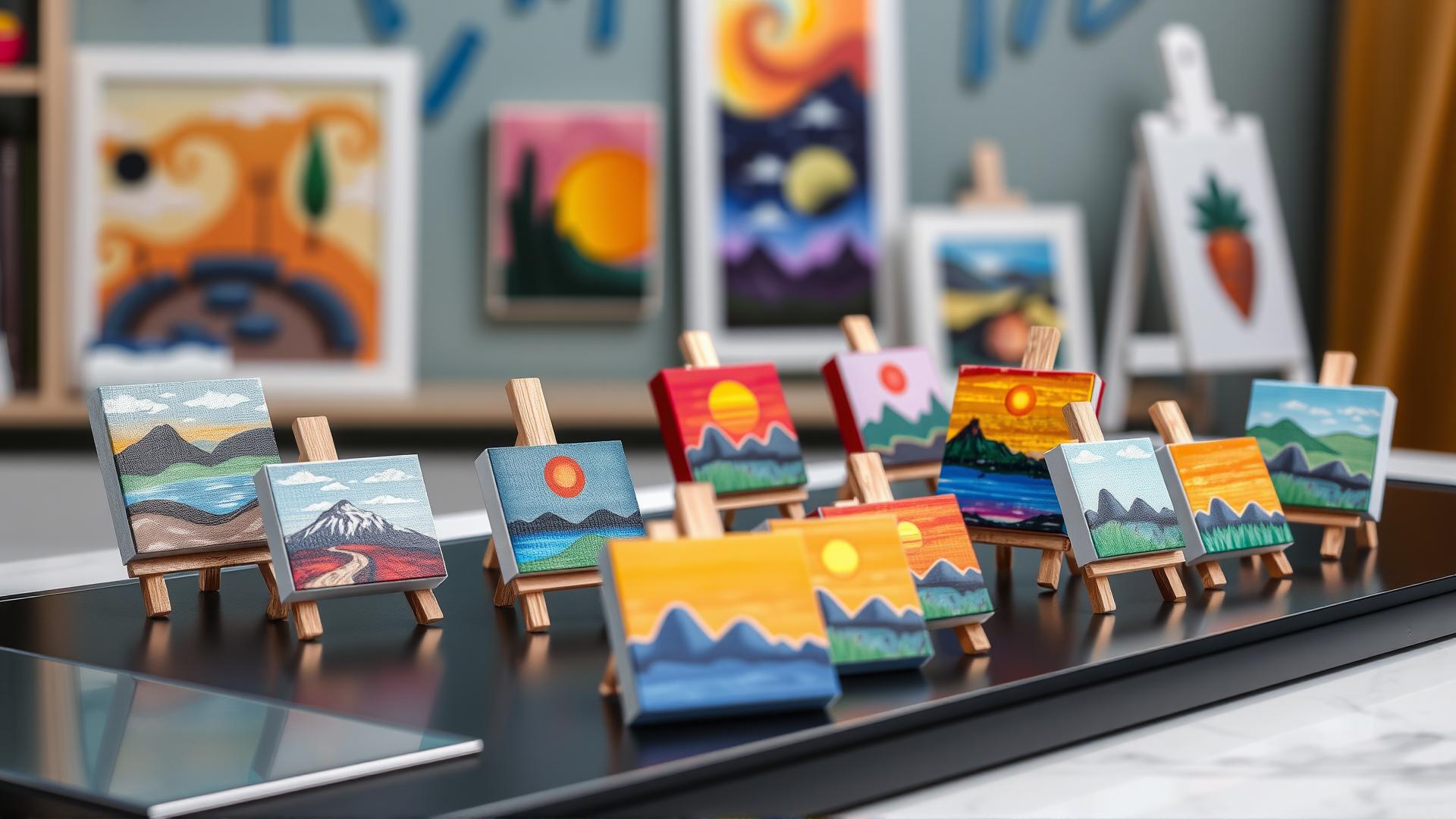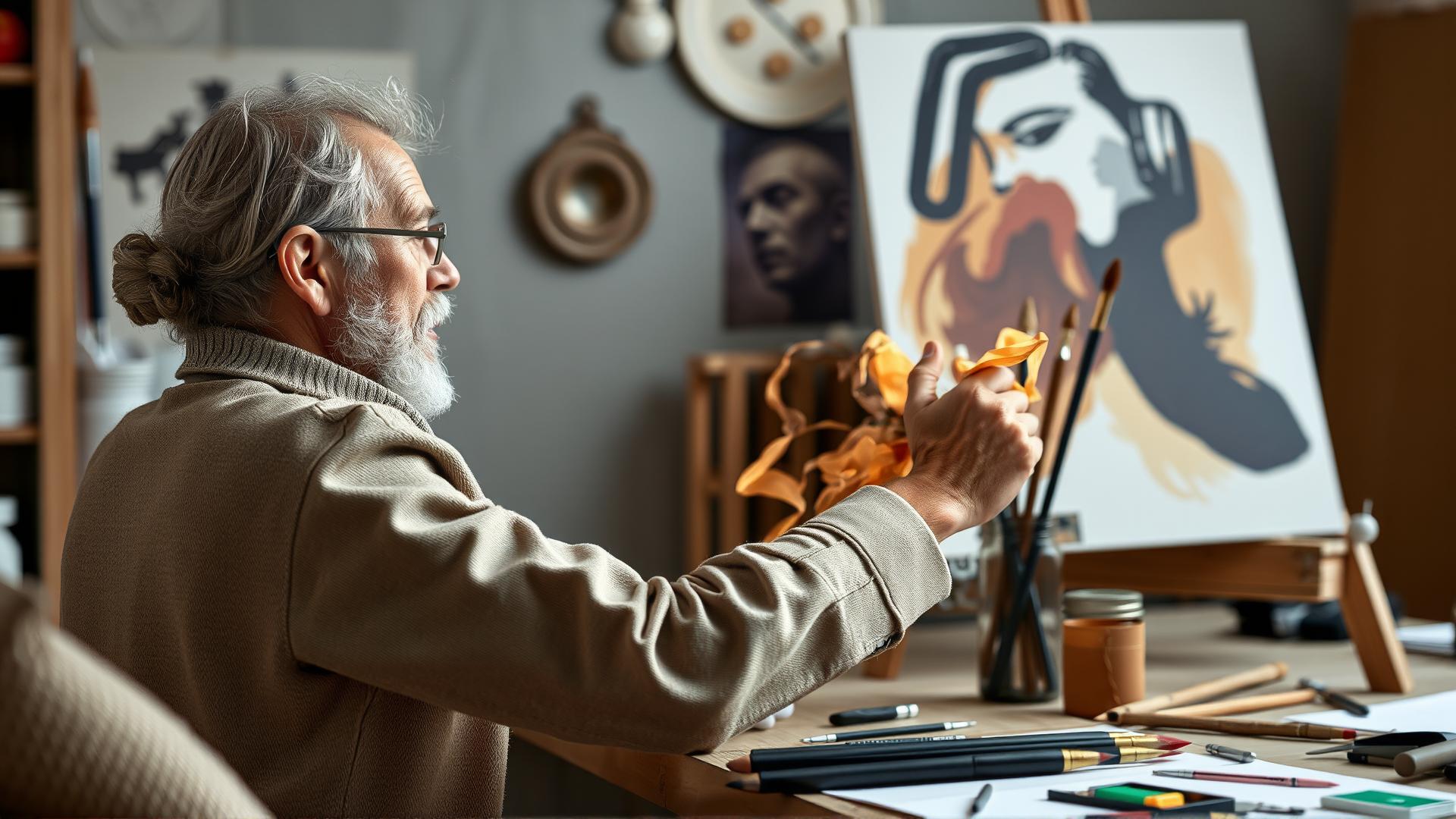Introduction
Art has a profound ability to evoke emotions, transport viewers into different realms, and inspire awe. Among various artistic expressions, beautiful paintings stand out for their unique capacity to capture the essence of moments, emotions, and perceptions of reality. This article delves into the world of beautiful paintings, examining the techniques, styles, and the creativity behind some of the most captivating artworks throughout history. From classical masterpieces to contemporary innovations, we’ll explore what makes these paintings resonate with audiences and influence future artists.
As we navigate through this exploration, we will uncover the rich histories behind iconic paintings and the artists who created them. Beautiful paintings are often more than mere visuals; they tell stories of cultural significance, personal experiences, and artistic experimentation. Whether it’s a serene landscape, an abstract composition, or a striking portrait, these artworks invite us into a dialogue, challenging our perceptions and encouraging us to see the world through the artists’ eyes. Join us as we unveil the secrets that make beautiful paintings such compelling subjects of admiration and inspiration.
The Historical Significance of Beautiful Paintings A Journey Through Time
Beautiful paintings have long served as a reflection of societal values, cultural shifts, and artistic innovation, tracing their lineage back to ancient civilizations. The evolution of painting has been profoundly influenced by regional contexts, technological advancements, and cultural exchanges. From the rudimentary cave paintings of prehistory to the complex masterpieces of the Renaissance and onto contemporary works, this art form has narrated the human experience across generations.
In ancient times, art was often intertwined with spirituality and communal identity. The Egyptians utilized hieroglyphs and vivid imagery in their tomb paintings, not just for aesthetic appeal but also to secure a safe passage to the afterlife. Similarly, the Greeks focused on realism and proportion, striving to elevate their gods and human forms to ideals of beauty. The classical period laid a foundation for concepts such as symmetry and perspective, which would resurface prominently throughout art history.
The Medieval period saw a shift as religion dominated the themes of paintings, with artists employing symbolism and vibrant colors to convey spiritual narratives. The Byzantine style was emblematic of this era, illustrating the transcendence of the divine. As the world transitioned into the Renaissance, a remarkable rebirth of classical ideas emerged. Artistically, this was a time of unparalleled discovery, wherein masters like Leonardo da Vinci and Michelangelo harnessed the anatomical precision and light techniques learned from their predecessors to create immortal works.
The ensuing centuries birthed numerous movements that responded to political, social, and technological changes. The Baroque period introduced dramatic contrasts and emotional depth, while Romanticism celebrated individualism and nature. With the advent of Impressionism in the late 19th century, artists like Monet began to explore light and color in innovative ways, moving away from strict realism and enabling personal interpretation.
In the 20th century, movements such as Abstract Expressionism and Surrealism broke boundaries and challenged viewers’ perceptions. Cultural influences transformed artistic expression, leading to the global interconnectedness of styles and techniques. The evolution of beautiful paintings is not merely a timeline but rather a tapestry that captures the essence of humanity—a dialogue between the past and present, shaped by shared experiences and diverse perspectives.
Techniques That Enhance Artistic Beauty Analyzing Brushwork Color Theory and Composition
Brushwork: The Language of the Artist
Brushwork serves as a captivating tool for artists, conveying emotion and depth while defining the visual texture of a painting. A variety of brush techniques can create different effects; for instance, the smooth strokes of an impasto technique produce a three-dimensional quality, drawing the viewer into the painting’s tactile experience. In contrast, finer brushwork can delineate details and produce intricate patterns that invite closer inspection. Each brushstroke functions as a deliberate gesture, revealing the artist’s intent and emotional state. Masters like Van Gogh utilized dynamic and expressive brushwork, transforming simple depictions into vibrant and kinetic landscapes that seem alive.
Color Theory: The Science of Emotion
Color forms the foundation of visual art, influencing mood and perception. Knowledge of color theory allows artists to create harmonious relationships between hues, translating emotions into visual poetry. The color wheel demonstrates the relationships between primary, secondary, and tertiary colors, guiding artists in their chromatic choices. Warm colors often evoke feelings of joy and energy, while cool colors conjure tranquility and introspection. For example, the bold reds and yellows in Matisse’s works scream vibrancy and life, while the cool blues in Monet’s water lilies encourage calmness and reflection. The deliberate selection and placement of color can evoke emotional responses and enhance the overall appeal of a piece.
Composition: The Art of Arrangement
Composition dictates how the elements within a painting are arranged, directly affecting the viewer’s experience. The principles of composition, such as balance, contrast, and focal points, guide how the eye navigates the artwork. Artists might employ the rule of thirds to create interest and ensure pivotal elements are harmoniously positioned within the frame. The interplay between negative and positive space can result in dramatic tension and intrigue, inviting viewers to explore the canvas further. Renowned works, like those of Vermeer, showcase exceptional composition leading the eye through a carefully crafted narrative. Each element, from foreground to background, interconnects, creating a holistic experience that captivates and inspires.
By mastering these techniques of brushwork, color theory, and composition, artists enrich their creations, inviting audiences into an immersive dialogue that transcends mere visual appeal. With skillful application, these elements transform a painting from a mere image into a profound encounter, evoking ideas and emotions that resonate across time and culture.
The Role of Inspiration in Creating Beautiful Art
Sources of Inspiration for Artists
Art, in its most resonant forms, emerges from an intricate interplay of inspiration drawn from various sources. Artists often channel the rich tapestry of their experiences into their creations, allowing the world around them to influence their work in profound ways. Nature serves as a primary muse for many, providing a spectrum of colors, textures, and forms. From the delicate petals of flowers to the expansive hues of a sunset, landscape influences manifest in countless masterpieces, allowing viewers to connect emotionally with the subjects depicted. Artists like Claude Monet and Vincent van Gogh harnessed nature’s beauty to evoke feelings of tranquility, wonder, and even nostalgia.
Emotions also play a pivotal role in the genesis of beautiful paintings. Artists frequently translate their inner feelings onto canvas, transforming personal experiences into universally relatable artworks. Whether depicting joy, sorrow, or tension, these emotions shape the composition, color choice, and brush strokes, all of which contribute to the emotional depth of a piece. For example, Edvard Munch’s “The Scream” brilliantly encapsulates existential angst and turmoil, drawing viewers into a visceral encounter with raw emotion.
Cultural Narratives and Artistic Expression
Cultural narratives, too, provide a rich wellspring of inspiration. Artists often reflect their cultural or historical context in their work, infusing their pieces with deeper meanings that resonate with societal issues or collective memories. The vibrant colors and patterns found in African or Indigenous art tell stories of tradition and identity, embodying the spirit of the communities they represent. These stories often transcend generations, offering insights into the values and experiences that define a culture.
The synthesis of these diverse sources of inspiration creates unique artistic expressions that invite contemplation and dialogue. Each brushstroke and color choice transforms the painter’s vision into a tangible experience for the viewer, allowing them to witness not only the beauty of the artwork but also the intricate motivations behind its creation. In understanding the significance of inspiration, one gains a deeper appreciation for the masterpieces that continue to influence and inspire across time and space.
Understanding the Emotional Impact of Paintings
Exploring the Psychological Connection Between Art and Viewer
Art possesses an inherent ability to evoke emotions, transcending the boundaries of culture, language, and time. A beautiful painting can stir feelings of joy, sadness, nostalgia, or even contemplation, offering a glimpse into the artist’s mind and their emotional landscape. This emotional resonance is rooted in several psychological principles, which explain why certain paintings captivate us so profoundly.
One effective means through which art expresses emotions is through color. Colors can elicit specific feelings; for example, warm hues like reds and yellows can invoke feelings of warmth and happiness, while cool colors such as blues and greens may induce calmness or melancholy. Artists who harness these chromatic principles effectively can create a visceral connection between the artwork and its observer.
The composition of a painting plays a significant role in its emotional impact. The arrangement of elements within a piece can lead the viewer’s eye on a journey, guiding their emotional response. Balanced compositions often evoke harmony and contentment, while chaotic arrangements might inspire tension or unease. The use of lines can also influence perception; soft, curved lines may create feelings of comfort, while jagged angles might elicit a sense of anxiety or aggression.
Symbolism is another psychological device artists use to convey deeper emotions. A seemingly mundane object within a painting can symbolize complex sentiments—such as a wilting flower representing lost love or a dark sky symbolizing despair. This capacity to convey multilayered meanings invites viewers to ponder and interpret the artwork, fostering a personal connection that enhances its emotional weight.
The context in which a painting is created and displayed affects its emotional impact. The socio-cultural narratives surrounding the artwork and its creator can shape our understanding and emotional response, highlighting the interplay between art and the times it reflects. A painting witnessed in a museum setting may evoke awe, while the same piece viewed in a more intimate environment might inspire introspection.
Beautiful paintings act as bridges between the artist’s inner world and that of the viewer, fostering a dialogue that enriches the experience of both. These emotional connections deepen our appreciation for art, celebrating not only its aesthetic qualities but also its power to move and inspire us through shared human experiences.
Preserving the Legacy of Beautiful Paintings The Importance and Methods of Art Conservation
Beautiful paintings serve as invaluable windows into the human experience, capturing emotions, thoughts, and cultural contexts across centuries. Their significance extends beyond mere aesthetics; they are repositories of history and reflect diverse narratives that define our identity. However, the preservation of these artistic masterpieces is paramount. Over time, various factors such as environmental conditions, physical wear, and even human interference can threaten the integrity of these artworks. Thus, safeguarding them for future generations becomes critical, allowing their stories to continue inspiring and resonating.
The Importance of Art Conservation
Preserving beautiful paintings goes beyond just maintaining their visual appeal. It involves an understanding of their historical context and cultural significance. Artworks can embody social commentary, represent transitional phases in history, or celebrate cultural heritage. By conserving these pieces, we not only protect physical structures but also maintain the ties to our past, allowing individuals to connect with the ideas and emotion originally intended by the artists. Furthermore, conserved artworks enhance learning opportunities for future generations, enabling them to reflect upon and engage with a shared cultural narrative.
Methods of Preservation and Restoration
Art conservation is a specialized field requiring extensive knowledge and expertise. Preservation methods include environmental controls, which entail regulating temperature and humidity levels to prevent deterioration. Moreover, artworks are often protected from harmful light exposure through UV-filtered glass or by regulating their exhibition duration.
In cases where paintings require restoration, conservators employ various techniques tailored to the specific needs of each artwork. This may involve cleaning the surface to remove dirt accumulated over the years, repairing tears, or even re-stretching canvases. Conservationists often utilize scientifically advanced methods, including non-invasive imaging techniques that provide insights into the underlying layers of a painting without damaging it.
For instance, the use of digital technologies allows experts to visualize the painting’s original state and assess the best course of action. Techniques like varnishing can help restore a painting’s sheen while providing a protective layer against environmental threats. Ethical considerations also play a critical role in the restoration process, ensuring that restorations respect the artist’s original intent and do not overstep boundaries.
The thoughtful preservation of beautiful paintings ensures that they remain vibrant reflections of our cultural heritage, inviting future generations to form their own emotional connections with these artistic treasures.
Conclusions
The exploration of beautiful paintings reveals the intricate tapestry of art that connects us all through shared experiences and emotions. From the techniques employed by the artists to the meanings behind their works, each beautiful painting serves as a vessel for expression and connection. As we reflect on the insights gained from examining these masterpieces, we recognize the importance of appreciating not just the aesthetic appeal but also the stories that they embody.
Beautiful paintings inspire not only individuals but also entire generations. They push boundaries and challenge artistic norms, continually inviting us to engage with art in new and meaningful ways. As we continue to seek out and appreciate art, let us remember the profound impact that beautiful paintings can have, acting as a bridge between the past and the future, as well as between artists and their audiences.

